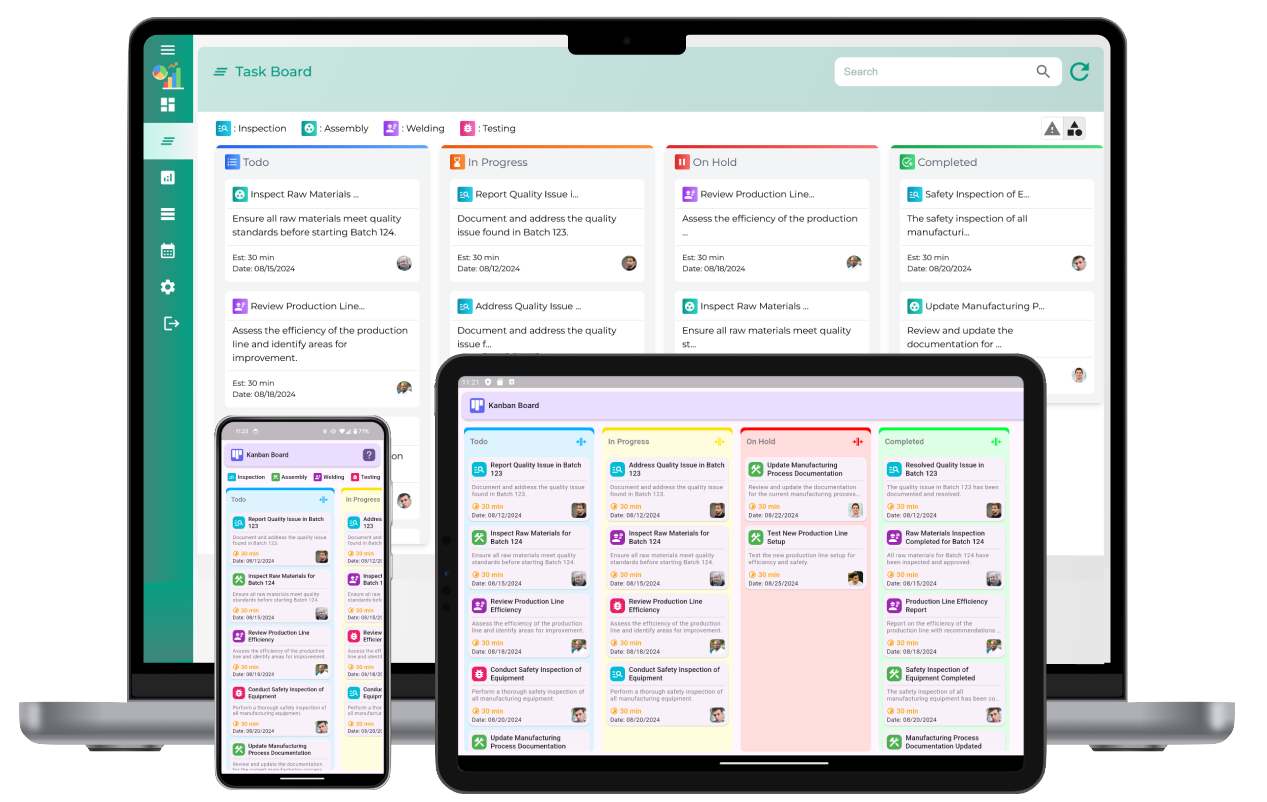Exploring Kanban Continuous Improvement: Fostering Evolution in Workflow
Continuous improvement lies at the heart of the Kanban methodology, driving teams to refine their processes incrementally and enhance overall efficiency.

Understanding Kanban Continuous Improvement:
1.Iterative Approach:
Kanban emphasizes the iterative nature of improvement, encouraging teams to make small, incremental changes to their processes over time.
By focusing on gradual enhancements rather than drastic overhauls, teams can minimize disruption and effectively manage change.
2.Feedback Loop:
Continuous Improvement in Kanban is facilitated by a feedback loop that enables teams to gather insights, identify areas for improvement, and implement changes based on feedback.
Regular feedback from team members, stakeholders, and customers helps teams refine their processes and adapt to evolving requirements effectively.
3.Kaizen Philosophy:
Kanban continuous improvement is deeply rooted in the Kaizen philosophy, which advocates for ongoing, incremental improvements in all aspects of work.
By embracing a Kaizen mindset, teams foster a culture of continuous learning, experimentation, and adaptation, driving sustainable growth and innovation.
Key Components of Kanban Continuous Improvement:
1.Visual Management:
Visual management is essential for Kanban continuous improvement, providing teams with a clear, transparent view of workflow, tasks, and process performance.
Visual indicators such as Kanban boards, metrics dashboards, and performance charts enable teams to identify bottlenecks, visualize workflow dynamics, and track progress towards improvement goals.
2.Feedback Mechanisms:
Kanban encourages the establishment of feedback mechanisms to gather insights from team members, stakeholders, and customers.
Feedback channels such as retrospectives, daily stand-ups, customer feedback loops, and performance reviews provide valuable input for identifying improvement opportunities and refining processes.
3.WIP Limits and Flow Optimization:
Setting and enforcing Work in Progress (WIP) limits is a key aspect of Kanban continuous improvement, helping teams manage workflow congestion and maintain flow efficiency.
By optimizing flow and reducing WIP, teams can minimize lead times, increase throughput, and enhance overall process performance.
4.Cadence and Rhythm:
Kanban continuous improvement operates on a rhythm of regular cadences, such as daily stand-ups, weekly retrospectives, and quarterly reviews.
These cadences provide opportunities for teams to reflect on their performance, gather feedback, and plan improvement initiatives collaboratively.
Implementing Kanban Continuous Improvement:
1.Define Improvement Goals:
Begin by defining clear improvement goals aligned with organizational objectives and team priorities. These goals should be specific, measurable, achievable, relevant, and time-bound (SMART).
2.Gather Feedback:
Establish feedback mechanisms to gather input from team members, stakeholders, and customers. This feedback can be collected through surveys, interviews, retrospectives, and performance reviews.
3.Identify Improvement Opportunities:
Analyze feedback and performance data to identify areas for improvement within your workflow. Common improvement opportunities may include reducing cycle time, eliminating bottlenecks, improving quality, or enhancing collaboration.
4.Prioritize Initiatives:
Prioritize improvement initiatives based on their potential impact, feasibility, and alignment with organizational goals. Focus on addressing high-priority issues that offer significant value or pose substantial risks to the project or organization.
5.Experiment and Iterate:
Implement small, incremental changes to your processes and workflow, and monitor the results closely. Experimentation allows teams to test hypotheses, learn from outcomes, and iterate on their approaches continuously.
6.Review and Reflect:
Regularly review performance metrics, gather feedback, and reflect on the effectiveness of improvement initiatives. Conduct retrospectives and performance reviews to assess progress, celebrate successes, and identify areas for further refinement.
Benefits of Kanban Continuous Improvement:
1.Enhanced Process Efficiency:
Kanban continuous improvement drives efficiency gains by identifying and addressing inefficiencies within the workflow. By optimizing processes, teams can reduce waste, streamline operations, and deliver value more effectively.
2.Adaptability and Resilience:
Continuous improvement fosters adaptability and resilience within teams, enabling them to respond effectively to changing requirements, market conditions, and customer needs.
3.Empowered Teams:
By involving team members in the improvement process and empowering them to make decisions, Kanban continuous improvement fosters a sense of ownership, engagement, and accountability.
4.Innovation and Creativity:
Continuous improvement encourages innovation and creativity by providing a structured framework for experimentation, exploration, and learning. Teams are encouraged to challenge the status quo and explore new ideas for process optimization.
5.Customer Satisfaction:
By continuously refining processes and enhancing product or service quality, Kanban continuous improvement ultimately leads to higher levels of customer satisfaction and loyalty.
Kanban continuous improvement is a foundational principle of the Kanban methodology, driving teams to refine their processes iteratively and pursue excellence in all aspects of their work. By embracing a Kaizen mindset, establishing feedback mechanisms, and prioritizing incremental changes, teams can foster a culture of continuous learning, adaptation, and innovation. Through ongoing reflection, experimentation, and collaboration, Kanban continuous improvement enables teams to optimize their workflows, deliver value more efficiently, and achieve sustainable success in today's dynamic business environment.